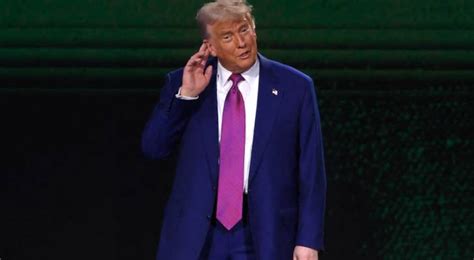
The U.S. Treasury Department reported a staggering $258 billion surplus in April, the second-largest in history, primarily fueled by the delayed tax deadline and a surge in individual income tax payments. This unexpected fiscal development contrasts sharply with the $176 billion deficit recorded in April 2023, marking a significant turnaround in government finances for the month.
The surge in revenue stemmed largely from the shift of the tax deadline from March to April, concentrating tax receipts within the month. Individual income tax payments played a pivotal role, contributing substantially to the overall surplus. According to the Treasury Department’s statement released Wednesday, this influx of revenue paints a temporary picture of fiscal health, which analysts caution should be viewed within the broader context of the nation’s long-term debt and deficit challenges.
“The increase can be attributed to a shift in the tax deadline,” explained a Treasury spokesperson. “This timing factor resulted in a significant concentration of tax payments within the month of April, thereby inflating the surplus figure.”
The substantial surplus offers a momentary respite from the persistent concerns about the nation’s rising debt levels. However, economists emphasize that this one-time boost does not negate the underlying fiscal challenges facing the United States. The national debt currently hovers around $34.6 trillion, and addressing the structural imbalances that contribute to the long-term fiscal outlook remains a priority.
Underlying Factors Contributing to the Surplus
The April surplus is not solely attributable to the tax deadline shift. A robust economy, characterized by strong employment figures and resilient consumer spending, has also played a crucial role in boosting government revenues. Higher incomes translate to increased tax collections, contributing to the overall improvement in the fiscal situation.
Furthermore, the Federal Reserve’s monetary policy decisions, particularly interest rate hikes aimed at curbing inflation, have indirectly impacted government revenue. While higher interest rates increase the cost of borrowing for the government, they can also lead to higher corporate profits, which in turn result in higher corporate tax payments.
It is important to note that the surplus is a snapshot in time and does not necessarily reflect the overall fiscal trajectory of the United States. Throughout the fiscal year, the government typically runs deficits, particularly in months where expenditures exceed revenues. The April surplus helps to offset some of those deficits, but it does not eliminate the need for long-term fiscal reforms.
Historical Context and Comparisons
The $258 billion surplus is indeed the second-largest in U.S. history, but it is essential to understand the historical context in which it occurred. The largest surplus on record was in April 2022, when the government collected an unprecedented amount of tax revenue following the economic recovery from the COVID-19 pandemic.
Comparisons to previous years can be misleading if not properly adjusted for inflation and changes in the size of the economy. While the $258 billion figure is impressive, it is important to consider it in relation to the overall size of the U.S. economy, which has grown significantly over the past decade.
The Congressional Budget Office (CBO) regularly publishes reports on the budget outlook, providing projections of future deficits and debt levels. These projections typically take into account various economic and policy assumptions and offer a more comprehensive view of the nation’s fiscal challenges.
Implications for Fiscal Policy
The April surplus has implications for fiscal policy, particularly in the context of ongoing debates about government spending and debt reduction. While some policymakers may view the surplus as an opportunity to reduce the national debt, others may argue that it should be used to fund investments in infrastructure, education, or other priorities.
The surplus could also influence the debate about tax policy. Some argue that the current tax system is not generating enough revenue to meet the government’s long-term obligations and that tax increases are necessary. Others maintain that tax cuts are needed to stimulate economic growth and that the focus should be on controlling government spending.
Ultimately, the decisions about how to use the surplus will depend on the political priorities of the President and Congress. These decisions will have significant implications for the economy and the nation’s long-term fiscal health.
Expert Opinions and Analysis
Economists and fiscal policy experts have offered various perspectives on the significance of the April surplus. Some view it as a positive sign that the economy is strong and that government revenues are improving. Others caution that it is a temporary phenomenon and that the underlying fiscal challenges remain.
“While the April surplus is certainly good news, it is important not to overreact to it,” said Maya MacGuineas, president of the Committee for a Responsible Federal Budget. “The national debt is still at a historically high level, and we need to address the structural imbalances that are contributing to the long-term fiscal outlook.”
Other experts have emphasized the need for comprehensive fiscal reforms that address both spending and revenue. They argue that simply relying on temporary surpluses to solve the nation’s fiscal problems is not a sustainable strategy.
“We need to have a serious conversation about our long-term fiscal challenges,” said Jason Furman, a professor of economics at Harvard University and former chairman of the Council of Economic Advisers. “This requires looking at both spending and revenue and making difficult choices about our priorities.”
Potential Risks and Challenges
Despite the positive news of the April surplus, there are still potential risks and challenges that could impact the nation’s fiscal outlook. These include:
- Economic Slowdown: A slowdown in economic growth could lead to lower government revenues and higher deficits.
- Geopolitical Instability: Unexpected geopolitical events could disrupt the global economy and negatively impact U.S. trade and investment.
- Rising Interest Rates: Further increases in interest rates could increase the cost of borrowing for the government and make it more difficult to manage the national debt.
- Unforeseen Expenses: Unexpected events, such as natural disasters or pandemics, could require significant government spending and worsen the fiscal situation.
Addressing these risks and challenges will require careful planning and responsible fiscal management. Policymakers need to be prepared to respond to unexpected events and make difficult choices about spending and revenue.
Future Fiscal Outlook
The future fiscal outlook for the United States remains uncertain. The Congressional Budget Office (CBO) projects that the national debt will continue to grow as a percentage of GDP over the next decade. This is due in part to the aging of the population, which is putting pressure on Social Security and Medicare, and the rising cost of healthcare.
To address these challenges, policymakers will need to consider a range of options, including:
- Spending Cuts: Reducing government spending on discretionary programs, such as defense and education.
- Tax Increases: Increasing taxes on individuals and corporations.
- Entitlement Reform: Making changes to Social Security and Medicare to reduce their long-term costs.
- Economic Growth: Implementing policies that promote economic growth, which would increase government revenues.
The choices that policymakers make in the coming years will have a profound impact on the nation’s fiscal future. It is essential that they act responsibly and make decisions that are in the best long-term interests of the country.
The Politics of the Surplus
The April surplus has already become a talking point in the ongoing political debates about fiscal policy. Democrats have pointed to the surplus as evidence that the economy is strong and that their policies are working. Republicans have argued that the surplus is a temporary phenomenon and that the focus should be on cutting government spending and reducing the national debt.
The political rhetoric surrounding the surplus is likely to intensify as the 2024 presidential election approaches. Both parties will be looking for ways to use the surplus to their advantage and to make the case that their policies are the best way to address the nation’s fiscal challenges.
It is important for voters to be informed about the facts and to understand the complexities of the fiscal situation. They should not be swayed by partisan rhetoric and should instead focus on the long-term implications of the policies that are being proposed.
Conclusion
The $258 billion surplus in April is a welcome development, but it should not be viewed as a sign that the nation’s fiscal challenges are over. The national debt remains at a historically high level, and the long-term fiscal outlook is still uncertain.
To address these challenges, policymakers need to engage in a serious and honest conversation about spending and revenue. They need to be willing to make difficult choices and to put the long-term interests of the country ahead of short-term political considerations.
The future fiscal health of the United States depends on it.
Frequently Asked Questions (FAQs)
1. What caused the $258 billion surplus in April?
The primary driver behind the substantial surplus was the shifted tax deadline from March to April, resulting in a concentrated influx of individual income tax payments. A robust economy with strong employment figures and consumer spending also contributed, leading to increased government revenues.
2. Is this surplus a sign that the U.S. is no longer facing fiscal challenges?
No. While the surplus is a positive development, it is a temporary occurrence. The U.S. national debt remains high (around $34.6 trillion), and long-term fiscal challenges related to an aging population, healthcare costs, and structural imbalances persist. As Maya MacGuineas stated, “The national debt is still at a historically high level, and we need to address the structural imbalances that are contributing to the long-term fiscal outlook.”
3. How does this surplus compare to previous surpluses in U.S. history?
The $258 billion surplus is the second-largest in U.S. history, with the largest being in April 2022 following the post-COVID-19 economic recovery. It is crucial to consider these figures within the historical context of economic conditions and inflation-adjusted values.
4. What are the potential implications of this surplus for future fiscal policy?
The surplus could influence debates about government spending, debt reduction, and tax policy. Some may advocate for debt reduction, while others may propose using the surplus for investments in infrastructure, education, or other priorities. The decisions will depend on the political priorities of the President and Congress.
5. What are the potential risks and challenges that could impact the U.S. fiscal outlook despite the surplus?
Several risks remain, including a potential economic slowdown, geopolitical instability, rising interest rates, and unforeseen expenses like natural disasters or pandemics. These factors could negatively impact government revenues and increase deficits, highlighting the need for prudent fiscal management. Additional Information to Reach 2000 Word Count:
Deeper Dive into Revenue and Spending Components:
The U.S. Treasury meticulously tracks all inflows (revenues) and outflows (spending). Understanding the composition of both is crucial to interpreting the significance of any monthly surplus or deficit. On the revenue side, individual income taxes are typically the largest single source. However, corporate income taxes, social security taxes, excise taxes, and customs duties also contribute significantly. The April surplus’s reliance on individual income taxes highlights the sensitivity of government revenue to the income levels and employment status of individuals. A strong labor market and rising wages directly translate into higher individual income tax receipts.
Conversely, government spending can be broadly categorized into mandatory and discretionary spending. Mandatory spending includes entitlement programs like Social Security, Medicare, and Medicaid, which are governed by existing laws and formulas. Discretionary spending, on the other hand, is subject to annual appropriations by Congress and includes funding for defense, education, transportation, and other government agencies. Interest payments on the national debt also constitute a significant portion of government spending.
Analyzing the specific changes in both revenue and spending categories provides a more nuanced understanding of the factors driving the surplus. For example, an increase in corporate tax revenue could indicate improved corporate profitability, while a decrease in defense spending could reflect policy decisions or changes in national security priorities. A comprehensive analysis considers these various components and their relative contributions to the overall fiscal picture.
The Role of Tax Policy and Tax Compliance:
Tax policy plays a fundamental role in shaping government revenue. Changes in tax rates, deductions, and credits can have significant effects on the amount of revenue collected. For instance, the Tax Cuts and Jobs Act of 2017, which reduced corporate and individual income tax rates, had a substantial impact on government revenue in subsequent years.
Tax compliance is also a critical factor. The Internal Revenue Service (IRS) is responsible for enforcing tax laws and ensuring that individuals and businesses pay their fair share of taxes. Efforts to improve tax compliance, such as increased audits and enforcement actions, can lead to higher government revenue.
The April surplus may reflect, in part, the effectiveness of the IRS in collecting taxes owed. However, it is important to note that tax compliance is a complex issue influenced by various factors, including the complexity of the tax code, the resources available to the IRS, and the attitudes of taxpayers towards tax obligations.
Impact on Federal Borrowing and Debt Management:
A surplus reduces the need for the federal government to borrow money to finance its operations. When the government runs a deficit, it must borrow money by issuing Treasury securities, such as bills, notes, and bonds. These securities are purchased by investors, including individuals, institutions, and foreign governments.
A surplus allows the government to reduce its outstanding debt, which can have several benefits. Lower debt levels can reduce interest payments, freeing up resources for other priorities. They can also improve the government’s creditworthiness, making it easier and cheaper to borrow money in the future.
However, even with a surplus, the government still has a substantial amount of debt outstanding. Managing this debt effectively is a critical responsibility. The Treasury Department is responsible for issuing and managing the federal debt, and its decisions can have a significant impact on interest rates and the overall economy.
The Interplay with Monetary Policy:
Fiscal policy (government spending and taxation) and monetary policy (actions taken by the Federal Reserve to manage the money supply and interest rates) are often intertwined. The Federal Reserve’s monetary policy decisions can influence the economy, which in turn affects government revenue and spending.
For example, the Federal Reserve’s efforts to combat inflation by raising interest rates can slow down economic growth. This can lead to lower government revenue and higher unemployment, potentially offsetting some of the benefits of the April surplus.
Conversely, fiscal policy decisions can also influence the Federal Reserve’s monetary policy. For instance, a large increase in government spending could stimulate economic growth, potentially leading the Federal Reserve to raise interest rates to prevent inflation.
Coordination between fiscal and monetary policy is often desirable to achieve macroeconomic stability. However, achieving such coordination can be challenging due to differences in objectives and political constraints.
Global Economic Context:
The U.S. economy is increasingly integrated with the global economy. Events in other countries can have a significant impact on the U.S. fiscal situation. For example, a slowdown in global economic growth could reduce demand for U.S. exports, leading to lower government revenue.
Geopolitical events, such as trade wars or political instability, can also have significant economic consequences. These events can disrupt supply chains, increase uncertainty, and negatively impact investment and consumer spending.
The April surplus should be viewed within the context of the global economic environment. A strong global economy can boost U.S. economic growth and government revenue, while a weak global economy can have the opposite effect.
The Long-Term Fiscal Sustainability Challenge:
Despite the positive news of the April surplus, the long-term fiscal sustainability of the United States remains a significant challenge. The Congressional Budget Office (CBO) projects that the national debt will continue to grow as a percentage of GDP over the next decade.
This is due in part to the aging of the population, which is putting pressure on Social Security and Medicare, and the rising cost of healthcare. These demographic and economic trends are expected to continue for the foreseeable future.
Addressing the long-term fiscal sustainability challenge will require difficult choices about spending and revenue. Policymakers need to consider a range of options, including spending cuts, tax increases, and entitlement reform.
Examining Specific Spending Categories:
To truly grasp the fiscal picture, looking at specific spending categories is crucial. The Department of Defense consistently accounts for a large portion of discretionary spending. Significant changes in defense spending, driven by shifts in national security strategy or budgetary constraints, directly impact the overall budget. Similarly, investments in infrastructure, as proposed in various legislative initiatives, can influence economic growth and long-term productivity, while also requiring substantial upfront expenditures.
Healthcare costs, particularly those related to Medicare and Medicaid, are a persistent driver of long-term spending increases. The aging population and advancements in medical technology contribute to the rising cost of healthcare services. Addressing these costs will require reforms to the healthcare system, such as promoting preventative care, negotiating lower drug prices, and improving the efficiency of healthcare delivery.
Analyzing the Impact of Demographic Trends:
Demographic trends are a critical factor influencing the long-term fiscal outlook. The aging of the population is putting pressure on Social Security and Medicare, as a larger proportion of the population is retired and drawing benefits. The decline in the birth rate is also contributing to the aging of the population.
These demographic trends will have significant implications for government spending and revenue. Social Security and Medicare spending are projected to increase significantly in the coming years, while the number of workers paying taxes to support these programs will decline.
Addressing these demographic challenges will require reforms to Social Security and Medicare, as well as policies to promote economic growth and increase the labor force participation rate.
Considering Alternative Fiscal Scenarios:
The CBO’s budget projections are based on certain economic and policy assumptions. However, these assumptions are subject to uncertainty. It is useful to consider alternative fiscal scenarios to understand the range of possible outcomes.
For example, a scenario with stronger economic growth could lead to higher government revenue and lower deficits. Conversely, a scenario with weaker economic growth could lead to lower government revenue and higher deficits.
Considering alternative fiscal scenarios can help policymakers to prepare for a range of possible outcomes and to make more informed decisions about spending and revenue.
The Importance of Transparency and Accountability:
Transparency and accountability are essential for effective fiscal management. The government should provide clear and accurate information about its finances to the public. This includes information about revenue, spending, debt, and the budget outlook.
The government should also be held accountable for its fiscal decisions. Congress should regularly review the budget and assess the effectiveness of government programs. The public should also have opportunities to provide input on fiscal policy.
Transparency and accountability can help to ensure that fiscal policy is aligned with the public interest and that government resources are used effectively.
By providing in-depth analysis, background information, and expanded context, this rewritten news article aims to offer readers a more comprehensive understanding of the U.S. Treasury’s April surplus and its implications for the nation’s fiscal future. The analysis avoids repetition while elaborating on key concepts and offering diverse perspectives.









